 Although 13th-century Europe was rife with ignorance and religious anxiety, the nascent state of the medical world contributed greatly to the amount of general sickness, pain, and death faced by the masses. As a result, it remains one of the most fascinating periods in history—a time when humans were straining to pull themselves from the muck of blindness into the light of understanding. One of the lowest points in medieval history occurred in the mid 14th century when the lethal bubonic plague unleashed itself on the populace, wiping out up to 60 percent of Europe’s total population. Fondly referred to as Black Death, this pandemic was one of the most devastating in human history, beginning in Eurasia, spreading through the Mediterranean, and eventually peaking in Europe between the years 1346–1353. Ripping through vast expanses of people in a short time, the plague eventually snuffed out an estimated 200 million people. But it wasn’t just the loss of human life that made the infectious disease frightening—it was the way it destabilized the world and made a mockery of religious faith that truly set it apart.
Although 13th-century Europe was rife with ignorance and religious anxiety, the nascent state of the medical world contributed greatly to the amount of general sickness, pain, and death faced by the masses. As a result, it remains one of the most fascinating periods in history—a time when humans were straining to pull themselves from the muck of blindness into the light of understanding. One of the lowest points in medieval history occurred in the mid 14th century when the lethal bubonic plague unleashed itself on the populace, wiping out up to 60 percent of Europe’s total population. Fondly referred to as Black Death, this pandemic was one of the most devastating in human history, beginning in Eurasia, spreading through the Mediterranean, and eventually peaking in Europe between the years 1346–1353. Ripping through vast expanses of people in a short time, the plague eventually snuffed out an estimated 200 million people. But it wasn’t just the loss of human life that made the infectious disease frightening—it was the way it destabilized the world and made a mockery of religious faith that truly set it apart.

Like the AIDS outbreak in the 1980’s, where homosexuals were vilified as the cause, the plague brought up issues of morality within society, as people struggled to understand what was happening. They blamed the outbreak on all sort of things—scandalous dress, human depravity, Christian dissension, and of course, the wrath of God. As the disease spread and brutally snuffed out the innocent, people began to cling even more desperately to their religious beliefs as a way to explain the misfortune. Why would God allow this to happen?

Some said the pestilence was the result of widespread corruption in the church, while others suggested it was punishment for the divisiveness of England and France during the Hundred Years’ War. After all, Europe had been constantly fighting with someone as long as anyone could remember, and massacres, pillaging, and destruction were simply the way of the land. Some saw the plague as the great equalizer that sought to put everyone back on the same level, even if it was subterranean. Others said the Black Death was punishment for the Christians because they did not continue with the Crusades and succeed in pushing the Muslim enemy from the Holy Land. The Crusades of the 14th century had failed—the Muslims still lived in Palestine—and the plague had arrived to remind everyone of this glaring defeat.
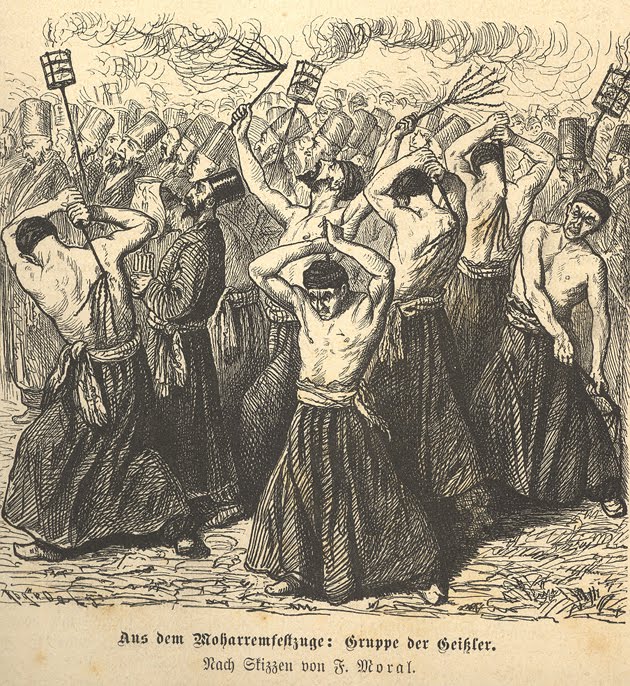
As a result, many folks took to self-flagellation as a way to appease Him. By using heavy leather straps studded with sharp metal to whip themselves, these contrite souls hoped to bring about his forgiveness. Like greed, blasphemy, heresy, fornication, and worldliness, Black Death was considered retribution for the sins of man. But while the good people of Europe beat themselves senseless as a method of healing, there was an even more pervasive evil at work—the intense persecution of the Jews who had become a convenient scapegoat for the entire affair. In an effort to cope with the terror and uncertainty, people lashed out at neighbors, while others fretted about the condition of their souls, and the Jews were caught in the middle.

While the connection between Jews and the plague may seem tenuous at best in the modern estimation, the Biblical interpretation of their role in Christ’s death was still fresh in the medieval mind, especially for the flagellants who believed them to be a scourge on the Christian sensibility. There was no concrete or logical reason behind these beliefs, but as we know, that makes little difference in zealot’s reasoning. Fueled by hundreds of years of prejudice and persecution, as well as the unexplained death of a Christian boy, a simple rumor in 1348 was enough to spark a major blame game, where Jews were suspected of secretly poisoning water sources and “corrupting” the air somehow. As a result, the whole world rose up against them, all congregating around the notion that they alone were the reason behind the plague’s horrific hold.

And horrific it was. First marked by flu-like symptoms, Black Death was almost as nefarious as its name. A high fever, chills, and headache would soon lead to black welts and bulges on the skin called buboes, appearing mostly in the lymph node area of the groin and armpit. Blood and pus would seep from these egg-size boils, both of which were highly contagious and able to strike a healthy person with very little contact. As the buboes swelled painfully, the stomach flu would ensue causing the person to suffer from extreme muscle cramps, vomiting, and diarrhea. These grim symptoms were also accompanied by a racking cough, heavy breathing, skin decay, and delirium, all leading to agonizing death in most cases.

Today, we know Black Death was really the result of a bacteria called Yersina pestis. It traveled from person to person through the air as well as through the bites of infected fleas and rats—and considering medieval Europe was rife with these pests, it’s no surprise the plague was able to decimate so many in such a short time. All it took was the arrival of one tainted Italian fleet at the port of Messina, carrying a cargo hold filled with plague-riddled rats from China. Despite the rumors of a great pestilence in the East, hundreds of people gathered on the dock to greet the twelve Genoese “death ships” and ogle the exotica aboard. And the rumor did not disappoint, as most of the sailors were already dead —and those who lived were gravely ill, covered in mysterious oozing black boils, delirious from pain, and on the verge of death. The Sicilian authorities quickly ordered the fleet out of the harbor, but it was too late. The ships had landed and the damage was soon to be done.
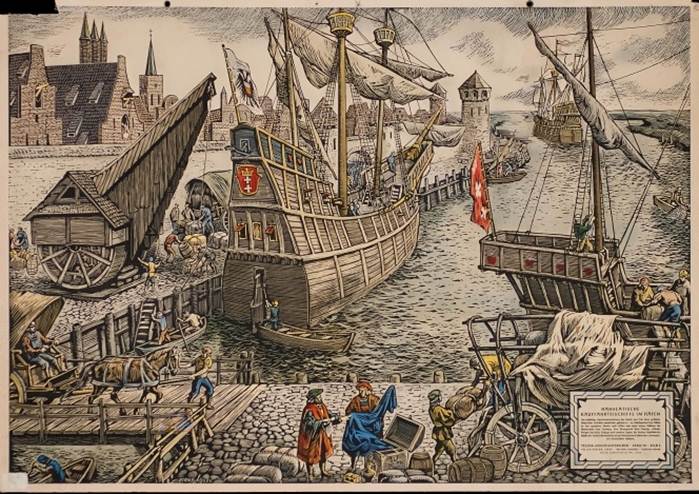
It’s worth noting the Jews were already facing many restrictions in Europe, even before the outbreak in 1348. The Pope had become mildly alarmed at all the public whipping in the streets and the way the spectacles seemed to inflame anti-Semitic sentiment and general frenzy. Yes, the Catholic Church appeared to discourage Jewish persecution, but the papacy was no friend to the Hebrew and had already enacted a law requiring Jews to wear distinctive clothing so as to separate them from Christians.

Even more, Jews had been professionally restricted for centuries and pigeonholed into being moneylenders or merchants. So while they did serve a valuable role in the community, the turn of the 11th century had changed their societal landscape. Christianity had stormed the world and become the predominant religion, bringing with it some of the most fanatical followers in history. But the Jews were resilient and smart—they developed merchant guilds and began to control a great deal of international commerce. This power did not play well the gentile, however, and it led to a general exclusion of Jews in the business world. People were happy to take loans from the Jews when they needed help but then used their demands to be repaid as an excuse to call them greedy opportunists.
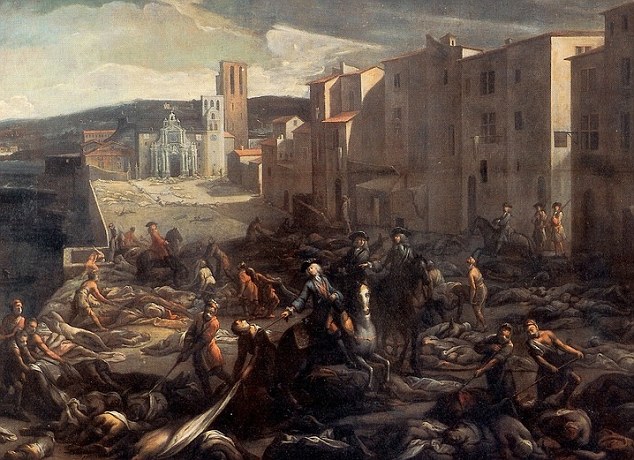
Not only did the Black Death heighten these tensions, it resurrected an ancient and pernicious belief known as blood libel—the accusation that Jews kidnapped and murdered Christian children to use their blood in dark religious rites. While the earliest known example of blood libel came from the Greek philosopher Democritus in the 1st century, who said “every seven years the Jews captured a stranger, brought him to the temple in Jerusalem, and sacrificed him, cutting his flesh into bits,” the explosion of plague-induced fear in medieval times renewed these beliefs and led to a resurgence of hatred.

Many Christians began to focus on the mysticism of the Jewish religion, suggesting they needed human blood for baking Passover matzoh and performing sacrifices for their God. In reality, these things ran contrary to the teachings of Judaism, as was proven when Abraham could not fulfill God’s command to kill his own son, eventually using a ram as a substitute. The Torah strictly forbids murder and the use of any blood in cooking—and for the record, eating human flesh was a clear violation of the dietary laws of kashrut. As for human sacrifice, that wasn’t endorsed either. While ancient Judaism did use animal death in some practices, the Old Testament clearly states the killing of humans to appease God is one of the great evils of the world—a sin that separated the pagans of Canaan from the Hebrews. For anyone who’s attended a Jewish funeral, it’s clear they do not relish being in the same room with the dead, as caskets are always closed, and the burial must technically happen within 24 hours—as the Torah states, “You shall bury him the same day… His body should not remain all night.”

People were stunned when the disease immediately began to take root in the community, as there seemed to be no explanation for it. Doctors had zero idea how to treat it and believed “instantaneous death occurs when the aerial spirit escaping from the eyes of the sick man strikes the healthy person standing near or looking at the sick.” In this way, the disease was seen as a metaphysical, almost divine, power that could be passed along through some sort of magical element in the air. It was precisely this belief that allowed for religious justification and led to the suspicion of the Jews. The disease was not just a sickness, it was a malady of the mind and spirit, a fact confirmed when medieval treatments like bloodletting, boil-lancing, and the burning of aromatic herbs did nothing. They could not understand why the plague skipped certain towns altogether while desecrating others, or why it abated in winter only to renew itself with even greater ferocity in the spring. In their panic, healthy people avoided the sick at any cost; most doctors refused to see patients; shopkeepers shut their doors; priests refused to offer last rites. People fled the cities to the countryside, but even there death was commonplace, as the corpses of cows, sheep, goats, pigs, and chickens littered the hillsides.

Although medieval clergy and wealthy nobles were pretty well-educated, they had nothing in their handbook to prepare them for the intensity of the plague, nor were they equipped with anything more than a rudimentary knowledge of medicine. They lacked scientific reasoning and relied mostly on superstition to explain things. And while medieval folks knew a bit about basic hygiene, it’s safe to say their overall existence was fairly filthy. Society had devolved from the grandeur of the Roman Empire where infrastructure like sewer systems and running water had allowed a more humane life. Despite their civilized manners, the people of medieval Europe had sunk pretty low. In a place where bathing was minimal, rats were everywhere, and the best thing people could do to ward off the spread of sickness was to close the windows, cover them with thick tapestries, and burn things like laurel, pine, beech, juniper, rosemary, and camphor, it’s no surprise the Black Death took them by the throat and squeezed.
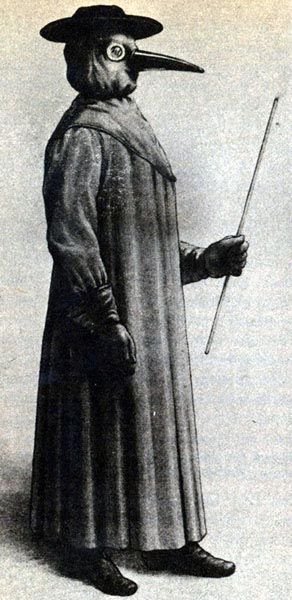
But rather than seeing their predicament as a medical quandary or a challenge to increase their knowledge, most people viewed it an excuse to hate on those they viewed as different. Because at the end of the day, the human instinct always seeks a way out of distress and personal pain through blame. By placing blame on someone else, we are able to excuse our personal role in any situation and slap a label of “bad” on someone else. And in doing that, we create a villain who can absorb our notions of evil and make them understandable. If we can just find someone to blame, disastrous situations become easier to understand and accept. Blaming others also allows us to place ourselves on a higher plane where we can feel more powerful and in control of a world that is clearly not interested in being controlled. If someone else is bad, then we must be good. By projecting all their fear about the Black Death on the Jews, society was able to rid themselves of the burden through simple distraction. It provided an explanation where there were none and understanding in a place of darkness—plus, it just felt good.
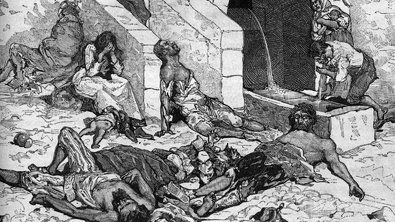
But what’s most remarkable about this time of intense persecution was the way it highlighted the failure of the Christian religion. The Black Death bankrupted Christianity because, in its moment of trial, it didn’t stand strong. It didn’t provide genuine guidance, wisdom, or foresight. Given the opportunity to find a moral high ground and use the teachings of God to further humanity, Christians chose to pursue the convenient avenue of fear. Faced with disaster, the veneer of Christian decency was ripped away, exposing a base and shoddy structure within. It was this failure that ushered in the Renaissance and the Reformation, where the modern world began to wake up and recognize the ignorances of the past.

The Count of Savoy at the time was a rash crusader and very quick to round-up the Jews—both men and women—to torture them in confession. Through these actions, he firmly believed he might unlock the secrets behind the Black Death and learn the dark secrets the Jews were obviously hiding. As is often the case with brutal torture, many confessions eventually spilled out, fueling the Christian fire even more. The most notable admissions were detailed and specific, naming the wells, cisterns, and springs in Venice and other areas that had been systematically poisoned, suggesting a dark network of Jewish corruption. But even though the process of torture resulted in confessions, it could not explain why the “poison” was so contagious or why the Jews themselves were also dying in vast numbers. But truth be told, the Jews weren’t dying as readily as the Christians, primarily because their religious laws focused on sanitary practices like washing hands—especially while eating—and bathing each week for the Sabbath.

Once these confessions became known and the suspicions were confirmed, the Christians began to round up the Jews and murder them in cold blood. In the town of Basel, Switzerland, Jews were forced into a large wooden structure specifically built to be set on fire, while in Strasbourg, Germany they were burned in the streets. On Valentine’s Day in 1349, 2,000 Jews faced conflagration, while others accepted baptism to save their own lives. The Jewish communities of Mainz and Cologne were completely wiped out. Children were torn from their parents while on the pyre and converted on the spot. And one of the most glaring benefits of the massacre was financial because once the Jews were gone, any property or possession they once had was divided among the Christians, and all previous debts were forgotten. In that way, many people jumped on the anti-Jew bandwagon as a way to further their financial agenda, not to fight the evil behind the Black Death.

For many Jews, the mere idea of being forced into Christianity was enough to push them to suicide. In the town of Esslingen, Germany, the whole Jewish community burned their local synagogue and threw their own children on the raging fire as a way to keep them from being baptized. At this point, even the church became concerned, and Pope Clement VI began to issue papal bulls in an attempt to stem the violence. These edicts insisted the plague was not the fault of the Jews and decreed no one should “capture, strike, wound, or kill any jews or expel them from their service on these grounds.” Even further, he threatened excommunication to anyone who sought justice through vigilante behavior instead of the legal system. But despite his religious authority, the Christians persisted.
 So, even though expanded trade routes brought many foreign delights to Europe, the advent of international trade also delivered a scourge of sickness that resulted in a whole new wave of Jewish ill-treatment. It seemed this new world of enterprise came with steep consequences of death and suspicion. In essence, the Black Death gave rise to an anti-Semitic sentiment lying dormant in the hearts of the populace, and it took the pot from a simmer to a full boil. And like the grim reaper who sweeps out of town after delivering his lethal message, the plague eventually waned in 1350, as did the violence against the Jews. And no one needed anyone to blame—at least for a while.
So, even though expanded trade routes brought many foreign delights to Europe, the advent of international trade also delivered a scourge of sickness that resulted in a whole new wave of Jewish ill-treatment. It seemed this new world of enterprise came with steep consequences of death and suspicion. In essence, the Black Death gave rise to an anti-Semitic sentiment lying dormant in the hearts of the populace, and it took the pot from a simmer to a full boil. And like the grim reaper who sweeps out of town after delivering his lethal message, the plague eventually waned in 1350, as did the violence against the Jews. And no one needed anyone to blame—at least for a while.
But looking back on history, many believe the outbreak of the plague and subsequent Jewish persecution was just a precursor to the larger event of the Holocaust in 20th-century Germany. The impact of the Black Death on Jewish history was significant, as it propelled anti-Semitic sentiment throughout Western Europe to the east, especially in Poland where the sickness was virtually non-existent. So, even thought both the Renaissance and the Reformation essentially gave birth to the modern world, much of the deep-seated resentment and suspicion of the Jews fed the hateful, lethal doctrine of the Nazis. And so, it is safe to say the Black Death managed to wipe out a lot more Jews that anyone ever knew.
And the rest is history.

Small typo. Blook instead of blood.Â
LikeLike
Got it! Thanks, editor 🙂
LikeLike
Fantastic webpage, good articles, but… With the Polish anti-Semitism you should be more careful – the problem started there during Catholic Counter Reformation in 16th century and never had the western scale (I hope you don’t blame Poles for Nazi murders?) – since 13th/14th century Poland was Jewish refuge in Europe, with Jews protected with special royal edicts. Btw. circa in the time of the Black Dead (1333-1370) Esterka, an influential Polish king’s mistress and his life’s love, was a beautiful and wise Jewess, medical doctor herself – she was educated by her grandfather, a famous Jewish physician of the time. Please check “Esterka” in Wiki.
LikeLike
Is the image about the death ships a primary source or was it done in modern day?
LikeLike